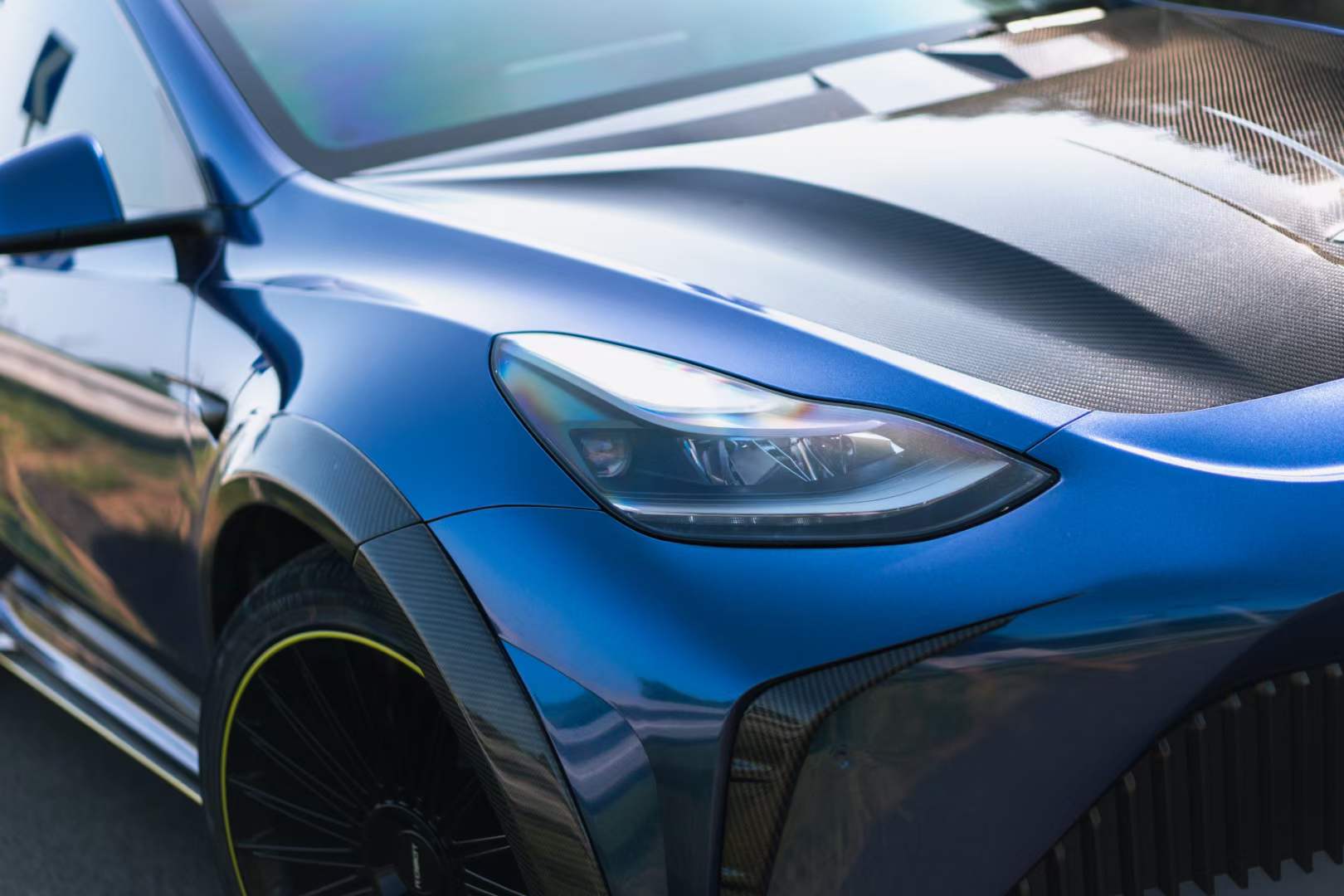
In this post, we’ll delve into five primary material options, exploring their manufacturing processes, and weigh their pros and cons.
1. 3K Woven Carbon Fibre (Wet Laid)
Manufacturing Process: The 3K woven carbon fibre is produced through a wet laid process. This involves soaking carbon fibres in a resin, followed by laying them into a mold. The resin helps bond the fibres together, giving them strength. The mould is then heated to cure the resin, creating a solid composite material.
Pros:
Cons:
2. Dry Carbon Fibre
Manufacturing Process: In the case of dry carbon fibre, pre-impregnated carbon fibres (prepregs) are laid into the mold without any additional resin. The mould is then vacuum-sealed and baked in an autoclave, ensuring that the resin within the prepreg flows evenly and cures under pressure.
Pros:
Cons:
Note: The increased cost and limited availability of dry carbon fibre kits stem from the sophisticated manufacturing process and specialized equipment required.
3. FRP (Fibreglass)
Manufacturing Process: FRP, or Fibreglass Reinforced Plastic, is produced by combining glass fibres with a polymer matrix, typically a thermoset resin. The fibres are laid in a mould, and the resin is poured or sprayed over them. The mould is then heated, allowing the resin to harden and bind the fibres together, creating a robust composite material.
Pros:
Cons:
Clarification on FRP Characteristics: It’s crucial to understand that the appearance of scratches, sand weaves, and join lines in FRP parts is a natural outcome of the manufacturing process and not an indication of poor quality. These traits are inherent in all FRP parts, irrespective of the manufacturer. Prepping these parts properly is essential before proceeding with painting or vinyl wrapping. By doing so, one ensures a smooth, flawless finish that enhances the aesthetic appeal and protection of the part. Hence, when you encounter such characteristics, remember that they aren’t quality issues, and every FRP part typically has them.
Use in Aftermarket Car Body Kits: Given its cost-effectiveness, versatility, and ease of customization, FRP remains a top choice for many aftermarket car body kits. It strikes an ideal balance between performance enhancements, aesthetic appeal, and affordability.

4. 3K Woven Carbon Fibre (Matte Finish)
Manufacturing Process: The matte finish is achieved post-curing of the standard 3K woven carbon fibre. After the curing process, the material undergoes a specialized surface treatment, which creates a smooth, non-reflective finish.
Pros:
Cons:
5. Forged Carbon
Manufacturing Process: Instead of using continuous carbon fibres, forged carbon employs a mixture of short carbon fibres and resin. This mixture is pressed into a mould under high pressure and temperature, creating a random pattern.
Pros:
Cons:
In conclusion, we offer a variety of materials, each with its unique characteristics, advantages, and challenges. Whether you prefer the elite feel of dry carbon fibre, the customizable nature of FRP, or the distinctive look of forged carbon, there’s a bodykit that’s perfect for you.
Important Note on Damages: If any part arrives damaged, it is of the utmost importance that you immediately take clear photos of the damage and notify the courier. In cases of damages, time is of the essence. The courier needs to be informed right away, as it becomes increasingly challenging for us to claim compensation if they aren’t immediately made aware. They might argue that the damage occurred post-delivery. For all future deliveries, we strongly advise our customers to take detailed photos of both the wooden box and the parts, ensuring any visible damages are well-documented. Additionally, always fill out damage letters on the bill as a proof of acknowledgment from the courier’s side.
The products sold on this website, including those sourced from our partners, are designed exclusively for racing and competition. These products are not intended for road use or public highways. Any use of these products must comply with the rules and regulations of officially sanctioned motorsport events. It is the buyer’s responsibility to ensure compliance with all applicable laws and regulations of their country, including but not limited to the UK and US.
Tyre Wall Stickers Ltd t/a Robot Craftsman EU makes no representations or warranties regarding the legality or suitability of these products for road use. By purchasing these products, the buyer assumes all risks and responsibilities for any consequences associated with their use.

Registered Company Name: Tyre Wall Stickers Limited T/A Robot Craftsman
Registered Company Number: 09373841
Email: [email protected]
Phone: +44 1858555583
Registered Address: 45 North End, Hallaton, LE16 8UJ